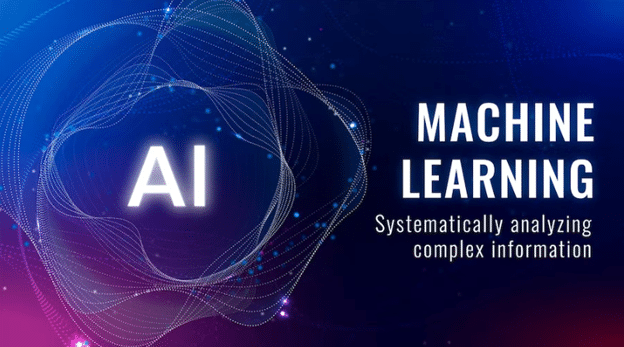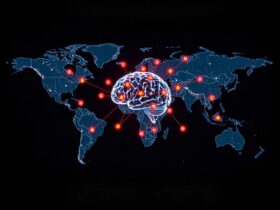Education has not been exempt from the revolution caused by artificial intelligence (AI) technology. AI is reshaping the educational landscape by offering creative ways to improve student success, engagement, and learning. With its ability to analyze vast amounts of data and adapt to individual needs, AI is driving personalized learning experiences. AI enables adaptive assessment and feedback, enhancing classroom support. Providing access to educational resources, facilitating early intervention and support, and raising ethical considerations and limitations. In this article, we will evaluate how AI technology is enabling students to succeed, along with the direction of education.
How AI Technology is Playing a pivotal role
Personalized Learning
Personalized learning experiences are one of the important ways AI is changing education. Personalized learning is a strategy that adapts course material to each student’s particular needs and preferences. To design personalized learning pathways, AI technology can analyze unique student data, including learning patterns, preferences, strengths, and weaknesses. AI-powered personal learning platforms offer individualized instruction, feedback, and assessments by customizing the content to each student’s understanding level and learning preferences.
Example
The application of AI to personalized learning has the potential to significantly affect student motivation, engagement, and academic performance. Students are more likely to be engaged and motivated to learn when they have access to material that fits their interests, aptitudes, and rate of learning.
With individualised learning, students can advance at their own rate, concentrating on their weak points and skipping over their strengths. By encouraging a sense of ownership and autonomy in the learning process, this individualised approach encourages students to take charge of their education and improves learning outcomes.
Adaptive Assessment and Feedback
The use of adaptive assessment and feedback in education is a significant application of AI. AI technology can deliver tests that are customised to each student’s level of comprehension, enabling a more precise and thorough evaluation of their knowledge and skills. Besides dynamically adjusting the level of difficulty of the questions based on a student’s performance and progress, adaptive assessments can make sure that the assessment is difficult but doable. This makes it easier to pinpoint students’ strengths and weaknesses.
Example
Correspondingly, AI-powered feedback can offer students immediate and focused feedback, assisting them in recognising and correcting errors. AI algorithms can review student responses and give feedback on areas that need improvement, assisting students in understanding their errors and pointing them in the direction of the right answers. Students can learn from their errors and enhance their comprehension and retention of the material by receiving immediate feedback.
The effectiveness of student learning outcomes is greatly improved by adaptive assessment and feedback. AI-powered systems can assist students in more accurately identifying their strengths and weaknesses by offering assessments and feedback that are customised to meet the needs of specific students. This knowledge can direct students towards areas that require improvement, improving their academic performance.
Enhanced Classroom Support
Automation of administrative tasks, such as grading and attendance tracking, can help teachers in the classroom. This can free up teachers’ time so they can concentrate more on teaching and giving each student their own support. Artificial intelligence (AI)-powered automated grading systems can offer consistent and impartial grading, minimising the possibility of human bias.
Virtual assistants powered by AI can also offer students real-time assistance while they are learning remotely or online. Virtual assistants can assist students with navigating the learning material and overcoming obstacles by responding to queries, offering clarifications, and offering advice. Particularly in online or remote learning environments, this real-time support can improve students’ learning experiences.
Example
In order to create a more interactive and interesting learning environment, AI can also help students and teachers communicate and work together. For instance, AI-powered chatbots or discussion forums can give students a place to work together, have discussions, and ask for assistance from their teachers and peers. For students’ academic writing, a paraphrasing tool and a plagiarism checker are very beneficial. This encourages group learning and can increase students’ sense of belonging and engagement.

Access to Educational Resources
The ability to give students access to a wealth of educational resources is one of the key benefits of AI technology in education. Students can get recommendations for useful learning resources based on their interests, learning preferences, and performance with AI-powered recommendation systems. Students will receive content that is specifically suited to their needs thanks to this personalized approach to resource recommendation, enabling them to learn more effectively and quickly.
A variety of educational resources, such as online textbooks, videos, tutorials, and interactive simulations, can be made available thanks to AI technology. Since these resources can be accessed online, students can study at their own pace and in the setting of their choice.
Example
For students in underserved areas or with limited resources, AI can also close the access gap to educational resources. For example, in this case, AI can offer students online resources, increasing accessibility and inclusivity in education in remote or rural areas where access to high-quality educational materials may be limited.
Furthermore, content creation can benefit from AI technology. To complement conventional classroom instruction, AI-powered tools can produce interactive tutorials, tests, and educational games. Each student’s individual needs can be met by these resources, which will improve their comprehension and retention of the subject matter.
Early Intervention and Support
The capability of AI in education to recognise students who might be experiencing academic or emotional difficulties and offer early intervention and support is another crucial aspect of the technology. AI-powered systems can identify early indications of academic or emotional challenges in students by examining performance data, behavioural patterns, and social interactions. This enables educators to take prompt action.
Example
AI can offer students timely resources and support to help them overcome obstacles and succeed academically. For example, AI-powered tutoring programmes can offer tailored instruction to students who are having trouble understanding particular ideas, enabling them to catch up with their peers. By offering advice and resources to deal with personal challenges like stress or anxiety, virtual mentors or AI-powered chatbots can also offer emotional support to students.
AI can also aid in the early identification of challenges like learning disabilities and mental health problems. For instance, AI systems can find patterns that might suggest a student has a learning disability, like dyslexia or ADHD, through data analysis and pattern recognition. Early identification and intervention can result in more efficient support and accommodations, which will enhance these students’ overall educational outcomes.
Ethical Considerations and Limitations
The use of AI in education raises ethical questions and has ethical constraints, just like any other technology. The issue of privacy is one of the main ones. Massive amounts of data, including student personal information, academic data, and behavioural patterns, are gathered and analysed by AI systems. To safeguard students’ rights and avoid misuse, it is essential to ensure the privacy and security of this data.
Fairness and bias are significant ethical issues when using AI in education. If the data used to train AI systems is biased, it may unintentionally reinforce preexisting biases, such as gender, race, or socioeconomic status. To prevent the perpetuation of discriminatory practises and to guarantee equal opportunities for all students, it is crucial to make sure that the AI systems used in education are designed and trained with fairness and inclusivity in mind.
Example
The responsible and transparent use of AI in education is crucial. The use of AI in the classroom, the data that is collected, and how it is used all require transparency from educators and institutions. Besides this, human supervision is necessary for the ethical use of AI. Human teachers and administrators are still necessary for decision-making, critical thinking, and providing emotional support to students, even though AI can automate administrative tasks and provide support.
Additionally, there are limitations and a lack of perfection in the AI systems used in education. For instance, since AI depends on accurate data, it may produce inaccurate results if the data used to train AI models is not accurate.
Conclusion
The use of AI technology in education has the power to fundamentally alter how students learn and perform. AI can significantly improve the educational process, from personalised learning experiences and adaptive assessments to effective administrative tasks and early intervention support.
AI-powered systems can create personalised learning paths that are catered to the needs of each student, increasing their engagement and comprehension of the subject matter. Additionally, AI can automate administrative tasks, giving teachers more time to concentrate on deeper interactions with students. AI can also help with early intervention, support, and identification.













Leave a Reply